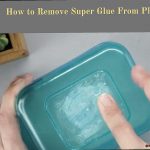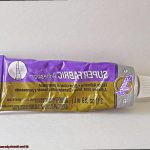Ah, the love-hate relationship we have with our cozy carpets. They bring warmth, comfort, and style to our homes, but when it’s time for a change or an upgrade, those stubborn remnants of carpet glue can turn into a real headache.
But fear not. Today, we’re about to reveal an unconventional solution that might just blow your mind – boiling water. Yes, you heard it right – that same element that fuels our morning coffees and steams our veggies could hold the key to liberating your floors from the clutches of stubborn carpet glue.
In this blog post, we’ll dive deep into the science behind this intriguing method, explore its potential benefits and limitations, and equip you with tried-and-tested tips to make the process a breeze. So get ready to bid farewell to that sticky residue as we embark on this scientific adventure together.
Main Points:
- Decoding Carpet Glue: Let’s unravel the mystery behind carpet glue’s composition and adhesive properties. By understanding how it works, we can better grasp why boiling water might be an effective solution.
- The Heat Factor: Brace yourself for some hot science. We’ll explore how boiling water can crank up the temperature and potentially weaken the grip of carpet glue on your floor. It’s all about breaking down those bonds.
- Safety First: While boiling water seems like a simple and safe solution, it’s important to be aware of potential risks and take necessary precautions when using this method. We’ll guide you through the do’s and don’ts for a worry-free experience.
- Tips and Tricks: Ready to roll up your sleeves? We’ve got you covered with step-by-step instructions on how to effectively use boiling water to remove carpet glue. Say goodbye to frustration and hello to hassle-free removal.
Don’t let carpet glue hold you hostage any longer. Join us on this scientific quest to uncover whether boiling water truly possesses the magical power to set your floors free. It’s time to unleash the sizzling secret and bid adieu to that stubborn residue once and for all.
How Does Boiling Water Remove Carpet Glue?
Contents
- 1 How Does Boiling Water Remove Carpet Glue?
- 2 What Types of Flooring are Sensitive to Heat or Moisture?
- 3 How to Use Boiling Water for Removing Carpet Glue
- 4 Pros and Cons of Using Boiling Water for Removing Carpet Glue
- 5 Other Methods for Removing Carpet Glue
- 6 Safety Precautions When Using Boiling Water
- 7 Conclusion
Carpet glue, the stubborn nemesis of flooring renovations, can be a daunting challenge to remove. For those seeking a natural and chemical-free solution, look no further than your kitchen. Boiling water, an everyday household item, possesses the remarkable ability to loosen and eradicate carpet glue effectively. In this captivating article, we will delve into the science behind the boiling water method and provide you with a step-by-step guide to achieve triumph in your removal endeavor.
Why Boiling Water?
Throughout history, boiling water has been revered for its versatile applications, from sanitizing to cleaning. The secret lies in its scorching temperature, which gives birth to steam – an unstoppable force capable of softening and loosening adhesive substances like carpet glue. By harnessing the potency of boiling water, you can effectively weaken the bond between the glue and the carpet fibers, thus obliterating it without resorting to harsh chemicals.
Step-by-Step Removal Process:
- Assess the Flooring: Begin by inspecting the underlying flooring to ensure its compatibility with heat and moisture. Certain flooring types, such as vinyl or hardwood, may suffer damage from boiling water. Prioritize safeguarding your floors during the removal process.
- Prepare Boiling Water: Equip yourself with a large pot capable of accommodating enough water to submerge the area afflicted by carpet glue. Position it atop your stove and apply heat until the water reaches a vigorous rolling boil.
- Pour the Boiling Water: Exercise utmost caution as you pour the scalding water directly onto the carpet glue. Beware of over-saturation, as excessive moisture could inflict harm upon your beloved carpet.
- Allow Time for Softening: Grant the boiling water several minutes to permeate the adhesive properties of the glue. The intense heat will penetrate its core, rendering it pliable and primed for effortless removal.
- Commence the Scraping: Armed with a scraper or putty knife, initiate the extraction process by gently scraping away the softened glue from the carpet’s surface. Begin at one edge of the adhesive and gradually progress towards the center, applying moderate pressure as required. Exercise caution to prevent undue harm to the delicate carpet fibers.
What Types of Flooring are Sensitive to Heat or Moisture?
Selecting the right flooring for your home requires careful consideration of each material’s sensitivities. Certain types of flooring can be highly sensitive to heat or moisture, necessitating special care and maintenance. In this article, we will delve into seven types of flooring that are particularly vulnerable to these factors. By understanding their unique vulnerabilities, you can make informed decisions and take necessary precautions to preserve the beauty and longevity of your floors.
Laminate Flooring:
Laminate flooring is a popular choice due to its affordability and durability. However, it is highly sensitive to both heat and moisture. The synthetic layers, including the fiberboard core, can warp, swell, or separate when exposed to high levels of heat or moisture. To safeguard your laminate floors, avoid placing hot objects directly on them and promptly clean up any spills to prevent water seepage.
Hardwood Flooring:
The timeless elegance of hardwood flooring is undeniable, but it is particularly sensitive to moisture. Wood is a natural material that expands and contracts with changes in temperature and humidity. Excessive heat or moisture can cause hardwood floors to warp, cup, or buckle. Additionally, direct exposure to heat sources like radiators or heating vents can gradually damage the wood. To maintain the integrity of your hardwood floors, monitor humidity levels and swiftly address any water spills.
Engineered Wood Flooring:
Engineered wood flooring offers a more cost-effective alternative to solid hardwood but shares similar sensitivities. Although it is more resistant to moisture compared to solid wood, prolonged exposure can still lead to damage. Engineered wood floors are also susceptible to heat and may warp or buckle over time. Protect your engineered wood floors by using rugs or mats in high-traffic areas and avoiding direct contact with excessive heat sources.
Vinyl Flooring:
Vinyl flooring is renowned for its water resistance, making it a popular choice for bathrooms and kitchens. However, it can be sensitive to extreme heat. Placing hot objects directly on vinyl floors can cause discoloration or even melting of the material. To shield your vinyl floors from heat damage, utilize trivets or hot pads under hot pots and pans.

Carpet Flooring:
Carpet flooring is cherished for its softness and warmth but can be sensitive to both heat and moisture. Exposure to high temperatures, such as from hot objects or direct sunlight, can cause fading or even melting of carpets. Furthermore, moisture accumulation can foster mold and mildew growth if not promptly addressed. To maintain your carpet’s longevity, refrain from placing hot objects directly on it and promptly attend to spills or water damage.
Cork Flooring:
Cork flooring is an eco-friendly option that provides excellent insulation properties. However, it is crucial to protect cork floors from excessive heat as it can cause the material to dry out and become brittle. Additionally, moisture can compromise cork flooring, so wiping up spills promptly is essential for its preservation.
How to Use Boiling Water for Removing Carpet Glue
Well, it’s time to unleash the power of boiling water. In this article, we’ll dive into the world of using boiling water for removing carpet glue. This eco-friendly and effective method can help you bid farewell to sticky situations and restore your floors to their former glory.
Gather Your Arsenal:
To embark on your glue removal journey, gather the necessary materials. Arm yourself with a sizable pot or kettle, clean water, a trusty scraper, and don’t forget those protective gloves and goggles. Safety first, adventurer.
Prepare the Battlefield:
Before going head-to-head with the glue, prepare the area for battle. Clear away any loose debris or dirt from the carpet. This ensures that the boiling water can work its magic directly on the glue, without any interference.
Ignite the Heat:
Now it’s time to crank up the heat. Fill your pot or kettle with pristine water and place it on the stove. Keep a watchful eye as the water starts to dance and bubble, eagerly awaiting its chance to tackle that pesky glue.
Pour with Precision:
With your boiling water at the ready, approach the battlefield with caution. Pour small amounts of boiling water directly onto the carpet glue, gradually increasing the quantity if needed. Precision is key here; let each drop find its mark.
Infuse Intensity:
Once the boiling water has made contact with the glue, let it work its magic. Give it time to infuse intensity into the adhesive’s core. Allow the water to sit for approximately 10 to 15 minutes, letting the heat soften the glue’s tenacious grip.
Scrape with Determination:
Armed with your scraper or putty knife, it’s time to unleash your determination. Gently and methodically scrape away the softened glue, starting at one edge of the affected area and gradually working your way towards the center. Each scrape is a triumphant step towards freedom.
Pros and Cons of Using Boiling Water for Removing Carpet Glue
Step right up, fearless floor warriors. Today, we embark on a thrilling expedition into the world of carpet glue removal, armed with the mighty power of boiling water. Prepare to witness the triumphs and tribulations of this formidable technique as we delve into its pros and cons. So gather ’round, my comrades, and let us uncover the secrets of this heated battle strategy.
Pros of Using Boiling Water for Carpet Glue Removal:
Non-toxic and Environmentally Friendly:
In a world plagued by toxic chemicals and harmful fumes, boiling water emerges as a shining beacon of safety. Unlike its chemical counterparts, this method poses no risk to your health or the environment. Breathe easy, my friends.
Convenience at Its Finest:
No need to venture into the depths of stores or dig deep into your pockets. Boiling water is an easily accessible resource found in almost every household. Say goodbye to unnecessary expenses and hello to a hassle-free solution. Time and money saved? Check.
Versatility at Its Peak:
Carpet glues of all kinds tremble before the scalding might of boiling water. Whether it’s a water-based or solvent-based adhesive holding your carpet captive, this method will loosen its grip with ease. Prepare for liberation like never before.
Cons of Using Boiling Water for Carpet Glue Removal:
The Stubborn Foe:
Alas, not all glues bow down to the might of boiling water. Some older or more stubborn adversaries may require multiple applications before they surrender their hold on your carpet. Patience, dear warriors; victory will be ours.
Time-consuming and Labor-intensive:
Prepare to break a sweat, my comrades. Boiling water demands your time and effort. The arduous task of heating a pot of water and pouring it onto the affected area may need to be repeated several times. But remember, great triumphs often require great sacrifices.
Beware the Carpet’s Wrath:
Hot water, a formidable ally, can also be a dangerous foe for certain carpet types. Natural fibers like wool or silk may shrink or lose their vibrant colors when subjected to high temperatures. Test a hidden corner before plunging into battle to preserve your carpet’s glory.
Other Methods for Removing Carpet Glue
In our previous battle strategy, we witnessed the mighty power of boiling water. Now, armed with knowledge and determination, we dive into an arsenal of alternative methods to conquer even the most stubborn glues. Join me as we unveil these formidable techniques and unleash their secrets in this captivating quest.
Solvents: Dissolving the Glue
When boiling water falls short, solvents step up to the challenge. Acetone, mineral spirits, or adhesive removers are potent allies in breaking down carpet glue. These chemical warriors dissolve the adhesive, making it easier for you to scrape it away. But beware. Solvents can be flammable and emit strong fumes. Always use them in well-ventilated areas and follow manufacturer instructions meticulously.
Heat: Softening the Foe
Heat becomes a powerful weapon against carpet glue. Besides boiling water, wield a heat gun or a hairdryer set on high heat to soften the adhesive. Direct your heat source towards the glue, allowing it to become pliable. Once softened, grab your trusty putty knife or scraper tool to scrape off the weakened glue. Remember to exercise caution, as excessive heat may harm the surface underneath.
Vinegar: The Acidic Ally
Ah, vinegar – a versatile warrior in every household. Its acidic properties make it an effective contender against carpet glue. Create a solution by mixing equal parts white vinegar and warm water in a spray bottle. Spray this magical concoction onto the glue and let it sit for a few minutes, permitting the vinegar to penetrate and loosen the adhesive’s grip. Then, with finesse, wield your scraper or putty knife to scrape off the softened glue.
Citrus-based Cleaners: Harnessing Nature’s Power
Nature offers an army of citrus-based cleaners, armed with the natural solvents found in citrus fruits. These cleaners, often containing d-limonene, have the power to effortlessly break down carpet glue. Apply the cleaner directly onto the glue and let it sit for a few minutes, allowing it to work its magic. With precision, use your scraper or putty knife to gently scrape off the softened glue. Rinse the area with water to remove any residue, leaving behind a pristine battlefield.
Safety Precautions When Using Boiling Water
Embarking on the task of removing stubborn carpet glue requires both skill and caution. With the mighty power of boiling water at your disposal, you can conquer this adhesive foe. However, before you engage in battle, it is of utmost importance to prioritize safety. In this comprehensive guide, we will unveil the secrets to handling boiling water like a seasoned professional, ensuring a process free from accidents or harm. So grab your safety gear, brace yourself, and let’s dive into the world of safety precautions when using boiling water for carpet glue removal.
Suit up like a Warrior:
Prepare yourself for battle by equipping the necessary protective gear. Don heat-resistant gloves, put on safety goggles, and don long sleeves to shield your skin from any potential splashes or spills. Armored with these essentials, you are ready to face any challenge that comes your way.
Breathe Easy:
Ventilation is your ally in this quest. Work in a well-ventilated area to steer clear of inhaling any fumes that may be released during the process. Open windows wide or employ fans to ensure fresh air flows freely as you embark on this mission.
Prepare for the Unexpected:
In every adventure, being prepared for emergencies is crucial. Keep a trusty fire extinguisher nearby in case any accidental fires flare up due to the use of boiling water. It’s better to have it on hand and not need it than to need it and not have it.
Handle with Finesse:
The key to success lies in how you handle the boiling water. Exercise extreme caution when dealing with hot water, using a kettle or pot with a spout for pouring onto the affected area. Maintain a firm grip on the container and avoid pouring directly from the stove or microwave to minimize the risk of painful burns or scalds.
Mind Your Surroundings:
In the heat of battle, it’s crucial to be aware of your surroundings. Take note of any electrical outlets or appliances near your work area and ensure they are turned off and unplugged. By doing so, you eliminate any potential accidents that may arise from a momentary lapse in attention.
xkmA2b_LQbI” >
Conclusion
To conclude, boiling water proves to be a mighty ally in the battle against carpet glue. With its scorching heat and steamy power, it fearlessly attacks the adhesive properties, leaving them weakened and vulnerable. By following a simple step-by-step process, you can bid farewell to that stubborn glue without relying on harsh chemicals.
Yet, like any hero, boiling water has its strengths and weaknesses. On the bright side, it boasts non-toxicity, accessibility, and versatility in conquering various types of glues. It’s an eco-friendly warrior that won’t break your bank. However, be prepared for a potential uphill battle with persistent glues that may require multiple rounds of attack. This method demands time and effort from you.
Safety must always reign supreme when harnessing the power of boiling water. Don your protective armor: gloves and goggles are your trusty companions. Ventilation is key to avoid inhaling fumes – conquer this task in a well-ventilated area. Arm yourself with a fire extinguisher just in case and handle hot water with utmost care.
If boiling water doesn’t fully vanquish the carpet glue or if you prefer alternative methods, fear not. There are other heroes waiting in the wings: solvents, heat guns or hairdryers, vinegar solutions, or citrus-based cleaners can all join forces against the stubborn residue.
In summary, while boiling water stands tall as a formidable opponent to carpet glue, remember to assess your unique situation and prioritize safety above all else.






